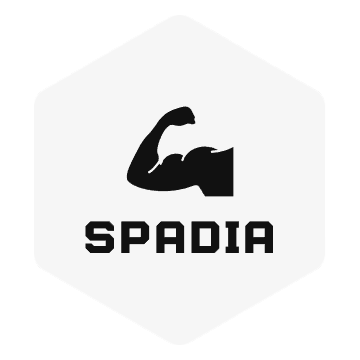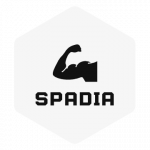Caffeine (most commonly found in coffee) is used by 90% of adults, and now by 50% of kids. This accounts for both adolescents and teens, and it’s looking to increase by each year.
The effects of Caffeine are most commonly known to induce sense of well-being, enhanced focus and better performance at work.
It is also associated with having withdrawal symptoms: if you’d like to quit caffeine after excessive use, you may prepare yourself to face couple of hard days where your mind has to adjust with lower levels of caffeine.
While the above information is commonly known, we’ll discuss the context on the best use cases for caffeine, information that will benefit you about how you can leverage caffeine.
And most importantly: 2 tools on how you can leverage caffeine to a great use in exercises and learning.
Caffeine is a positive reinforcer for anything
Caffeine acts as a positive reinforcer for any behavior / food you do or eat with it.
To give you the context: There was a study comparing 6 flavors of yogurt for kids. The twist was that one of the 6 flavors contained caffeine.
After a couple of eating bouts, kids started to very heavily prefer the one flavor containing caffeine in it. They didn’t necessarily know there was caffeine in any of those flavors.
This was later tested with a plain yogurt as well – and the same end effect was found.
This demonstrates the fact that caffeine acts subconsciously – and it positively reinforces any behavior or food that was ingested which contained caffeine.
For example, this positive reinforcing agent works for all animals – including honeybees. Honeybees are an additional example: flowers they have evolved to pick contain caffeine.
Adenosine: A molecule of sleep-wake cycle
Adenosine. A molecule which starts to build up after you wake up, continuously increases throughout the time you’re awake – and peaks right before you start your sleep.
During the sleep it gradually goes down. This also very much depends on the quality of your sleep – having good rapid eye movement and non rapid eye movement sleep cycle is important.
In ancient and medieval times – at least before the invention of modern lightning systems, we were wired to wake up and sleep based on the conditions of the Sun.
There was no true way to block Adenosine: people had to combat their sleepiness in the afternoon or evening by either taking a nap, or perhaps doing cold exposure.
How Caffeine truly works for improving focus
Caffeine allows you to dock in the same spots that Adenosine usually docks in. If you didn’t take caffeine, Adenosine would be attached to the receptors which do make you sleepier over time in the course of a day.
Caffeine will replace Adenosine in the very same spots – receptors – that it would be in. This means that Adenosine is not removed – but it just hangs around in your system, waiting for caffeine to wear off. Once Caffeine starts to diminish – Adenosine will start to attach to the same receptors en mass, and the large amounts of the molecule usually lead to an afternoon crash.
The way to avoid the afternoon crash is to try to not drink caffeine for 90-120 minutes upon waking: usually, there is still some Adenosine left in your system after waking up, which would be usually cleared off with seeing sunlight.
However as today we are more than ever sitting inside our homes – this might no longer become possible. You can also leverage cold showers or exercise to clear out excess Adenosine in your system – because all of those activities (including sunlight) increase Cortisol in a huge amounts.
And increasing your Cortisol in one huge peak is important to get you amped up for the day, instead of the general knowledge that Cortisol is bad.
Now after we have established the context behind how caffeine improves focus and how it works, we’ll talk about the 2 main tools (one for physical, one for mental performance) to use.
1st Tool: Improving Physical Performance with Caffeine
As a 1st tool we’ll talk about ways to use Caffeine for any physical performance: It could be weight lifting, endurance, strength training or hypertrophy training.
Caffeine, being a positive reinforcing agent as we have outlined in previous chapter, doesn’t just magically induce your higher likelihood to enjoy a particular habit or food more with it.
It leverages the universal currency dopamine, which is a motivation hormone to help you to both enjoy the activity more, and be more likely to to do the same activity again.
This can be translated to: If you’re particularly not enjoying the gym at the moment, or would like to hit a personal best on any form of exercise, caffeine consumption before the workout bout will help you to drive increased performance
This increase of performance will work both for the first bout of exercise, and the additional bouts of exercise for which you drink caffeine in prior to the session.
This should be especially useful as a way to better time your caffeine intake: If you would like to be more likely to stick to the gym, or do your personal best on an exercise, getting caffeine before your workout session will be the most beneficial tool you can leverage with it.
Caffeine for mental performance
In medieval times, there had been a practice of throwing kids into a river after them learning a particular information to help improve their memory.
This worked in 2 ways: it induced high adrenaline but also dopamine. And these 2 chemicals are associated with states of surprise (it can be both positive, or negative).
This state does not happen often (or at least did not in the past): and it led to a high states of improved memory, since it related to an important event happening, which induced higher learning.
Caffeine induces the same chemicals as we’ve described in the practice above – both adrenaline and dopamine, which leads to an improved memory of what you did before – yes, before – you drank coffee.
This means: If you would like to improve your abilities to learn, using caffeine particularly after you had focused on learning something will help you to maximize your capabilities to learn it.
3rd tool: Sugar Cravings vs Caffeine
An additional tool to use is particularly in case of sugar cravings. Since Caffeine helps as a positive reinforcing agent to a particular habit or food, you might be particularly looking out for things such as chocolate, which contain caffeine.
You can use this as well to a positive benefit: If you would like to learn to eat more healthy, you can use Caffeine (for example in pill form as well) to eat or drink it with healthy foods such as Brocolli.
Even despite the fact that you might hate the taste of Broccoli – you will quite fast learn to enjoy the taste of it.
Same way as when you drank coffee for the first time – it tasted bitter. But now you might be drinking it every day – similarly as 90% of adults do.




